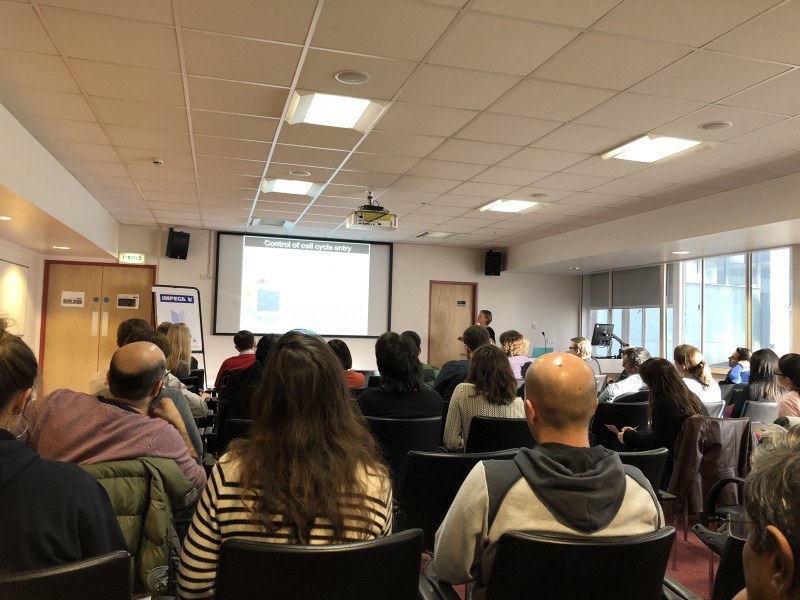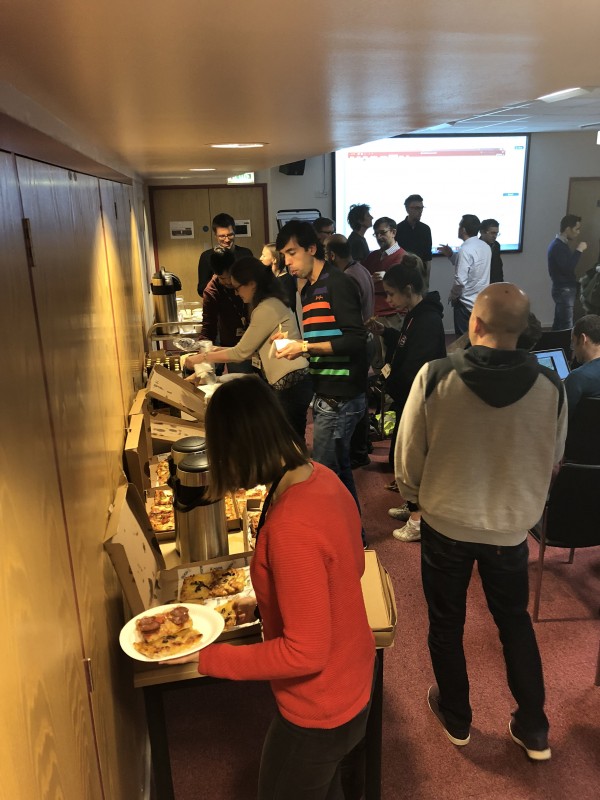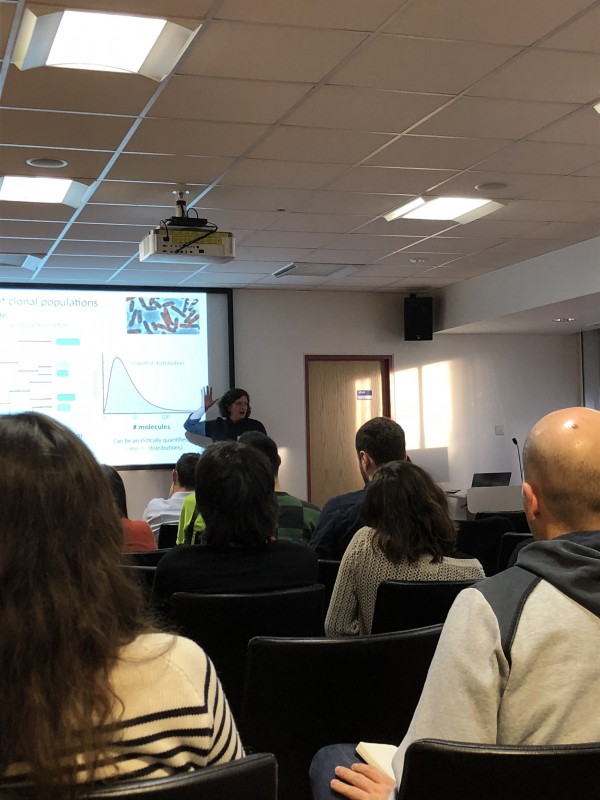By Sophie Arthur
November 30, 2018
Time to read: 3 minutes

On 13 November mathematicians and biomedical scientists gathered at the LMS for the third LMS-Maths Mixer.
Through a series of short talks, the biologists and mathematicians shared snapshots of their research interests, current challenges and highlighted potential areas of collaboration.

The initiative was established to encourage collaborations between group heads at the LMS and academics in the Department of Mathematics at Imperial. Following a talk from Vahid Shahrezaei at an LMS Innovation Mixer in 2014.
Given the increasing amounts of data produced and continual technological advances it is no surprise that biomedical research has a growing quantitative need. The appetite for collaboration across the boundaries of biological and mathematical disciplines at Imperial is evident. Illustrated by the creation of the ESPRC Centre for Mathematics of Precision Healthcare, presence of the Mathematics in Medicine group, Quantitative Sciences Research Institute (QSRI) and co-appointments in Biostatistics across the Departments of Mathematics and School of Public Health. Within the LMS a Mathematician-in-Residence, Vahid, was appointed in 2015 and there is a strong emphasis on research at the interface between biology and maths within the Integrative Biology section, established in 2012.
Bridging the boundaries
The event was coordinated by Samuel Marguerat (MRC LMS), Marina Evangelou (Statistics) and Vahid Shahrezaei (Biomathematics), with assistance from Thom Brain and Almut Veraart (QSRI). The event consisted of three sessions of short talks from researchers from the LMS and the Department of Mathematics, Imperial College London. Intersected by coffee breaks and concluding with informal networking.
The collaborative format was a progression from previous events where only mathematicians or LMS researchers had presented.
 Sam Marguerat, Head of the Quantitative Gene Expression research group at the LMS, has collaborated with Mathematician-in-Residence Vahid Shahrezaei for many years. They initially started working together due to their mutual interest in the impact of cell growth on gene expression.
Sam Marguerat, Head of the Quantitative Gene Expression research group at the LMS, has collaborated with Mathematician-in-Residence Vahid Shahrezaei for many years. They initially started working together due to their mutual interest in the impact of cell growth on gene expression.
Speaking about the importance of collaboration and the routes for initiating it, Sam said:
“Everyone wants to collaborate but if you don’t have the hands to do so it can be a challenge. There are lots of opportunities for LMS researchers to initiate collaborations with mathematicians through masters and joint PhD programmes to overcome these initial barriers.”
From cell cycle control in cancer to statistical models and organs in 3D
The first of three sessions included talks from Alexis Barr, Head of Cell Cycle Control group at LMS, Heather Battey, Lecturer in Statistics in the Department of Mathematics and Irene Miguel-Aliaga, Head of Gut Signalling and Metabolism group at LMS.
Cell-cell variability and single molecule imaging to the multi-armed bandit and rules of gene control
The second session following a short networking coffee break included talks from Philipp Thomas, Lecturer in Biomathematics in the Department of Mathematics, David Rueda, Head of the Single Molecule Imaging group at LMS, Sarah Filippi, Lecturer in Biostatistics in the School of Public Health and Department of Mathematics, and Mikhail Spivakov, Head of the Functional Gene Control group at the LMS.

Integrating data and the genetics of microbes to mitochondrial ageing and an evolutionary clue to epigenetic inheritance
The final session of talks came from Marina Evangelou, Lecturer in Biostatistics in the School of Public Health and Department of Mathematics, Filipe Cabreiro, Head of Host-Microbe Co- Metabolism group at the LMS, Nick Jones, Reader in Applied Mathematics and Mathematical Physics in the Department of Mathematics and Peter Sarkies, Head of Transgenerational Epigenetic Inheritance and Evolution group at the LMS.
The mixer concluded with the opportunity to network informally amongst attendees over pizza and drinks. Fuel for potentially fruitful future collaborations.